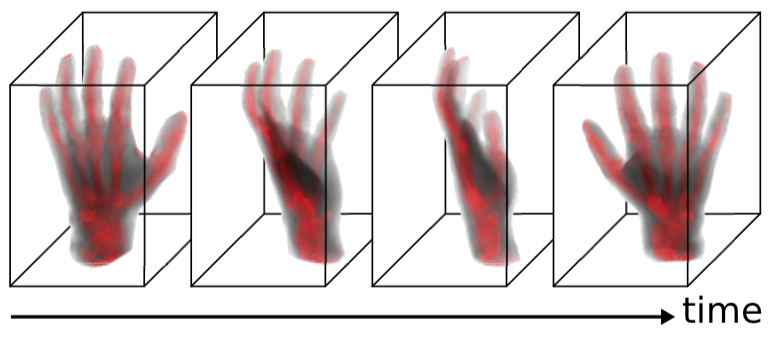Section: New Results
CBCT of a Moving Sample from X-rays and Multiple Videos
|
We consider dense volumetric modeling of moving samples such as body parts. Most dense modeling methods consider samples observed with a moving X-ray device and cannot easily handle moving samples. We propose instead a novel method to observe shape motion from a fixed X-ray device and to build dense in-depth attenuation information. This yields a low-cost, low-dose 3D imaging solution, taking benefit of equipment widely available in clinical environments. Our first innovation is to combine a video-based surface motion capture system with a single low-cost/low-dose fixed planar X-ray device, in order to retrieve the sample motion and attenuation information with minimal radiation exposure. Our second innovation is to rely on Bayesian inference to solve for a dense attenuation volume given planar radioscopic images of a moving sample. This approach enables multiple sources of noise to be considered and takes advantage of very limited prior information to solve an otherwise ill-posed problem. Results show that the proposed strategy is able to reconstruct dense volumetric attenuation models from a very limited number of radiographic views over time on synthetic and in-situ data, as illustrated in Figure 4.
This result was published in a prominent medical journal, IEEE Transactions on Medical Imaging [4].



